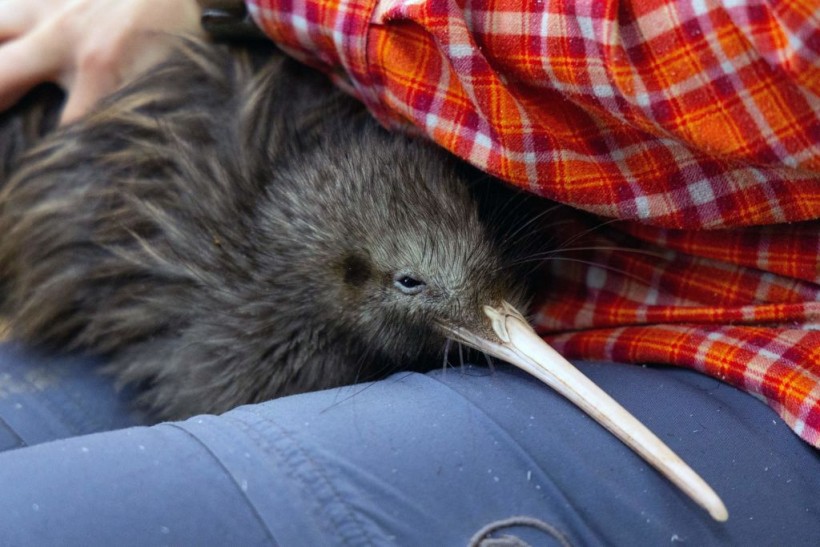Kiwis are flightless birds in New Zealand that have somehow become an unofficial national emblem of some sort. Now, New Zealand is taking active measures to protect these creatures.

This photo taken on April 12, 2023, shows a Capital Kiwi Project team member changing the transmitter on a male kiwi named ?t?rangi while performing a health check before re-releasing the bird back into the wild on Tawa Hill, Terawhiti Station in Wellington. - New Zealand's treasured kiwi birds are shuffling around Wellington's verdant hills for the first time in a century after a drive to eliminate invasive predators from the capital's surroundings.
Kiwi Population Decline
Around a millennium ago, the country would have housed several birds to the point where it would have been a "birdtopia" of its own. Getaway notes that these creatures would not have been familiar with the existence of mammalian predators.
However, things changed when Polynesian voyagers arrived around the 1200s, and Europeans came after a few centuries.
Other animals also kept eating the food of these creatures. Rabbits, for one, feasted on paddocks and meadows. Getaway also adds that the stroats that were first implemented to kill rabbits ended up letting birdlife get caught in between.
Because of this, the population of New Zealand's native flightless birds, such as kiwi and kakapo, met a stealth decline.
In fact, according to Phys, the Department of Conservation estimates that roughly 70,000 wild kiwis lurk across New Zealand.
Even if the bird is regarded as a national symbol, only a few people from New Zealand were able to spot one in the wild.
ALSO READ: Not All Birds Can Fly: Take a Look at How These Feathered Critters Use Their Wings on Land
New Zealand Protects Kiwis
As per Phys, for the first time in around 100 years, the country's iconic kiwis are moving around Wellington's verdant hills. This comes after efforts to eliminate invasive predators that lurk around the capital's surroundings.
Fortunately, the population of these creatures is rising once more thanks to over 90 community efforts across the country that focus on their protection, as reported by News24.
Among these many groups is the Capital Kiwi Project, which has garnered millions of dollars from donations and government grants.
As per News24, the project first focused on the creature's natural enemies.
For one, dog owners were invited to sessions to educate pets on steering clear of these flightless birds if they encounter them.
The efforts also focused on warring against stoats, which young kiwi chicks have no stand against. In fact, the whole project involved establishing 4,500 traps across an area that is equivalent to almost 43,000 football pitches. These were installed in Wellington's surrounding hills. News24 notes that, at present, 1,000 stoats have been claimed.
After this, the population of predators reached levels that were low enough for the first group of kiwis to be released. This took place last November.
The specialists regularly monitored the kiwis and discovered that the flightless creatures gained weight two months after their release.
Paul Ward, the project's founder, and leader, explained that taking care of the creature gifted New Zealanders with such a name is important.
RELATED ARTICLE: Kakapo Parrot, New Zealand's Flightless Bird Genome Sequenced for the First Time Revealing a Healthier than Expected Gene Pool
Check out more news and information on Animals in Science Times.














